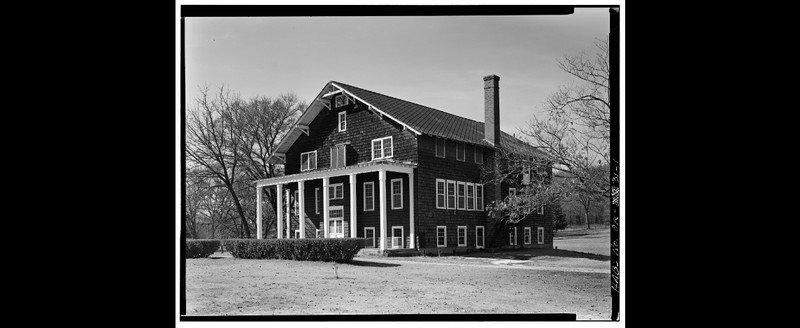Dwight Mission
Introduction
Text-to-speech Audio
Images
NE view of Admin building

East View of Admin building
.jpg)
Backstory and Context
Text-to-speech Audio
Beginning in 1820 the Cherokee Chief Tahlonteskee asked the Presbyterian missionaries in Oklahoma to come over to Central Arkansas to establish a mission. Reverend Cephas Washburn and Reverend Albert Finney decided to travel to Arkansas to answer the request from Chief Tahlonteskee. A good reason a mission was requested by the Cherokee was because the U.S. wanted to establish trading post amount Native Americans to trade furs and other resources to keep up diplomatic ties.
Major William Lewis Lovely, Colonel David Brearley, Colonel Matthew Lyon, and Major Lovely, all were Indian Agents in Arkansas and attempted to create better diplomatic relations between the Native American and the Whites. Even Major Lovely attempted to bring a detachment of federal troops to keep the peace between rebellious whites, Osage, and Cherokee Indians.
Reverend Cephas Washburn and Reverend Albert Finney and their families encountered several problems. One was the families waited to travel to late into the year and faced the hard rainfalls and floods. Later in the year they would fight insects, heat, and malaria during the summer months. After meeting with the Cherokee committee, the Dwight Mission was selected to be in the Illinois Bayou, four miles above its mouth.
The mission consisted of a mill dam, grist mill, sawmill, along with at least thirty-five other buildings. The construction cost of the entire mission would cost upwards to $10,250.00 at the time. The mission also bolstered a large crop of corn and potatoes along with cattle. The school at the mission also had over fifty students that would do missions to other tribes after graduation to help educate them. The mission would go on to print some of the first Cherokee alphabet pamphlets to help the Cherokee learn more.
Towards the turn of the century the Dwight Mission would go in to decline. Most of the schools started to shutdown or were neglected. The Presbyterian Church Committee wanted to focus on matter more to the West rather than the East which did not help the Mission. There were also natives who did not learn English and felt that they were neglected since sermons were conducted in English. Eventually with the changings of border, Native American migrations to reservations would also hinder the mission until its closing in the 1930’s.
Sources
Campbell, O. B. Mission to the Cherokees: the Story of Dwight Mission ; the First Mission Established West of the Mississippi River to Serve the Cherokee Indians. Oklahoma City, OK: Metro Press, 1973.
Payne, Betty, and Oscar Payne. Dwight: a Brief History of Old Dwight Cherokee Mission, 1820-1953. Tulsa, OK: Dwight Presbyterian Mission, 1954.
Turrentine, G R. “Arkansas Valley Historical Papers .” Dwight Mission. April 1962.
Historic American Buildings Survey, Creator, D Everett Waid, Cephas Washburn, Alfred Finney, Jacob Hitchcock, James Orr, Timothy Dwight, et al., Smalling, Walter, photographer. Dwight Mission,
Administration Building, Rural Route, Sallisaw, Sequoyah County, OK. Oklahoma Sallisaw Sequoyah County, 1933. Documentation Compiled After.
Photograph. https://www.loc.gov/item/ok0038/.
Library of Congress
Libray of Congress
